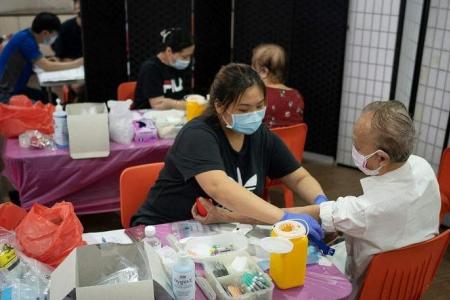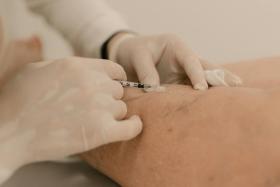Total number of TB cases in Singapore falls for 4th straight year
The total number of tuberculosis (TB) cases in Singapore fell for the fourth straight year in 2022, said the Ministry of Health (MOH) on Friday, adding that the disease remains a global public health threat.
There were 1,251 new cases of active TB among Singapore residents in 2022, a slight drop from the 1,300 cases registered in 2021.
Older people aged 50 and above constituted more than three quarters of all cases, while the number of men (846) with active TB in Singapore was more than twice that of women (405) last year.
While TB is endemic in Singapore, it remains a public health threat. Around 170 people in a Jalan Bukit Merah neighbourhood tested positive for TB last year. Common symptoms include cough with phlegm or blood, chest pains and night sweats.
MOH noted that “latent TB infection is not uncommon in our population, with rates of up to 30 per cent in the older age groups”.
There were more than 10.6 million global cases of active TB in 2021, with 1.6 million resulting in deaths, according to the World Health Organisation. After Covid-19, TB was also the second-most deadly infectious disease that year.
It can be transmitted through close and prolonged exposure to individuals infected with untreated, active TB, Singapore’s MOH said. But TB remains curable with appropriate medical treatment while its spread can also be curtailed through measures such as contact tracing and health screening.
MOH said those diagnosed with TB can be put on a treatment plan lasting around six to nine months, noting that people who do not adhere to their treatment are at risk of a relapse and developing a stronger variant known as multi-drug resistant TB (MDRTB).
Singapore reported six MDRTB cases in 2022, while nearly half a million cases were registered globally in 2021. When TB becomes resistant to drug treatment, death rates can rise to as high as 58 per cent.
Once treatment begins, people with active TB can become non-infectious, like those with latent TB who do not display symptoms, and cease to become contagious sources, Singapore’s health authorities said.
On Friday, which is also World TB Day, MOH urged individuals who are unwell and display symptoms to seek medical advice and prompt diagnosis. Close contacts should also be screened for the disease to protect the community.
Get The New Paper on your phone with the free TNP app. Download from the Apple App Store or Google Play Store now


